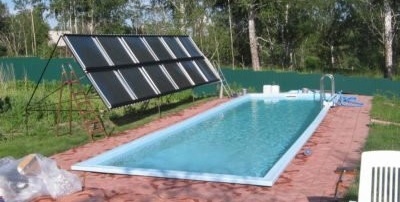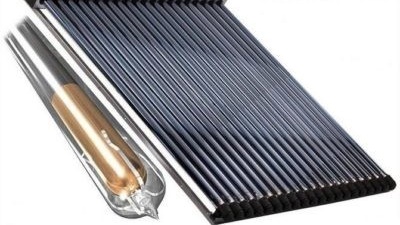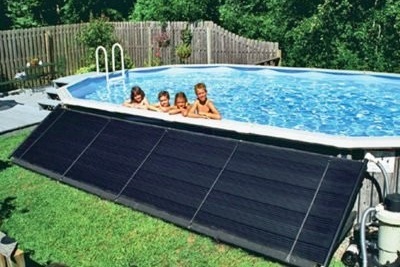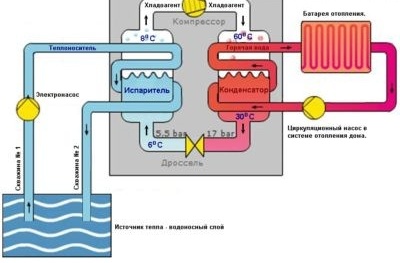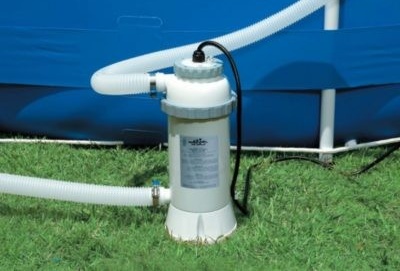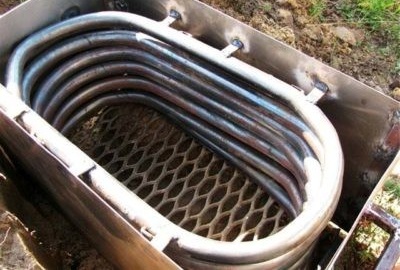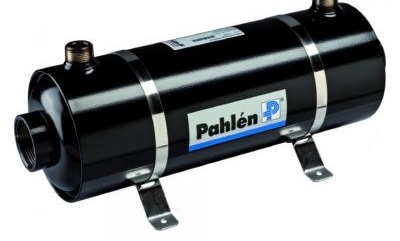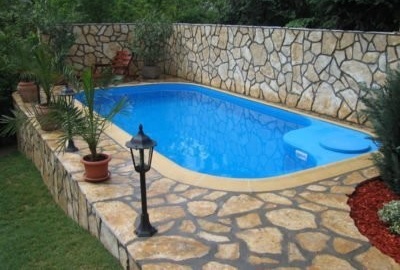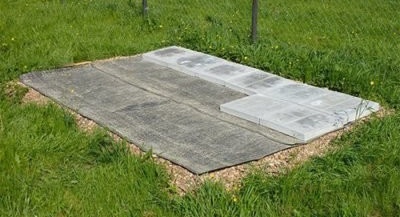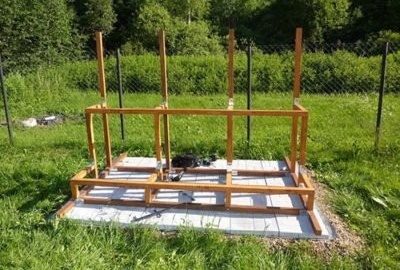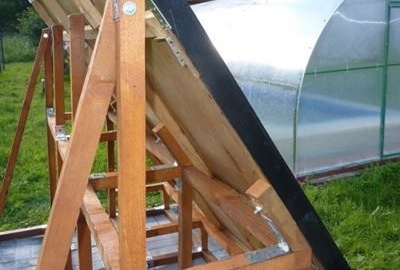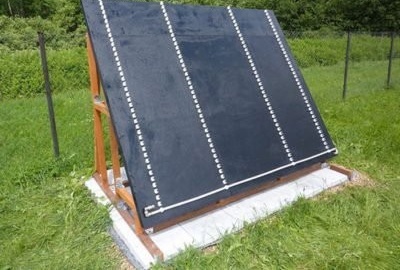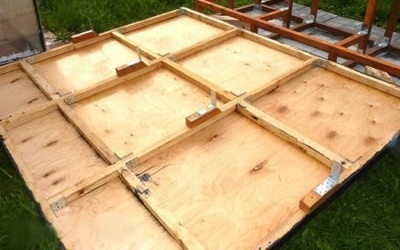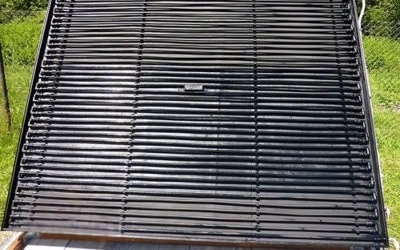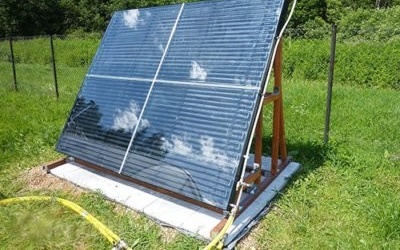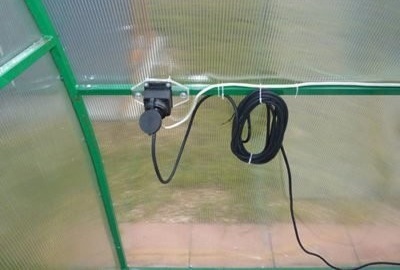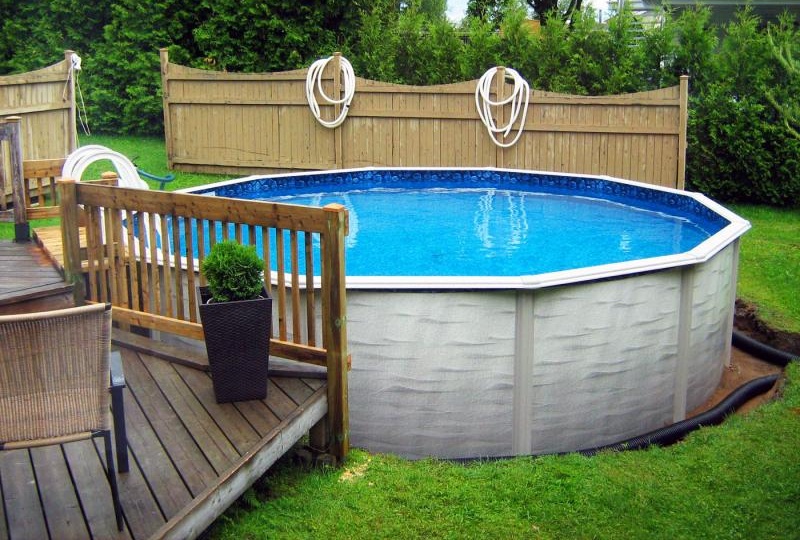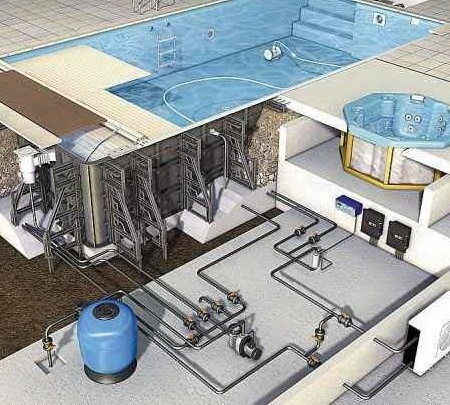Heated pool - luxury and comfort do it yourself
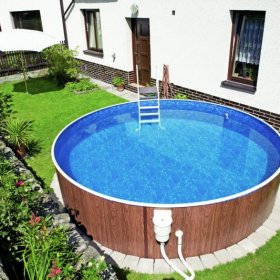
The presence of a pool in a country house delights not only children, but also adults. There is nothing difficult in its construction, and the technology itself has been worked out for years. However, the daily joy of water procedures can be overshadowed by the vagaries of the weather. In this case, an excellent solution would be to install a special device for heating water in the pool with your own hands.
Content
Methods for heating the pool water
There are a great many modern equipment for heating water, however, from the wide range of all devices, five main types can be distinguished, which today are more popular. Among them:
- Solar heaters or collectors.
- Heat pumps.
- Electric heaters.
- Fuel heaters.
- Heat exchangers.
Solar collectors
This method is ideal for those who live in an area where the sun shines most of the time. The device will allow you to quickly warm up any volume of water, by increasing or decreasing the number of special modules that receive solar energy.
The presented system has a number of features:
- solar heater is an environmentally friendly product;
- no additional temperature sensors are required for operation;
- self-installation of the device will provide a minimum of cash costs.
With all this, solar collectors can be divided into two groups.
Vacuum
They are panels with glass tubes installed on them, inside of which there are similar tubes with a smaller diameter. The highly selective composition covering their inner surface favors the conservation of solar heat. Due to the fact that the heater operates by transforming a special liquid into steam, the water in the pool warms up evenly and around the perimeter.
| Benefits | disadvantages |
| Resistant to negative natural phenomena (squally winds, blizzards, snowfalls) | High price |
| The ability to heat water to high temperatures | Not able to self-clean from snow |
| Long runtime even at low temperatures | Limited tilt angle (it must be more than 20 degrees) |
Flat
As a rule, collectors of this type are made in the form of breathable panels that contribute to the complete heating of water up to 200 degrees, even in the absence of sunlight. Each gap and hole on the finished device is sealed with silicone.
Flat collector panel consists of:
- a black-coated absorber (it is used as an ultraviolet radiation insulator);
- a transparent screen, which is made of corrugated polycarbonate;
- copper tubes, due to which the coolant is distributed;
- thermal insulation coating, which serves as a battery that stores the heat received.
The installation operates quite primitively: the absorber absorbs solar energy, after which it is converted into heat and transferred to water, evenly heating it.
| Benefits | disadvantages |
| Possibility of self-cleaning from snow | In the event of a breakdown, a complex repair process |
| Low cost | Decrease in productivity in a cold season |
| Increased summer productivity | Moderate resistance to the "whims" of nature (hail, blizzard, gusty winds) |
| Possibility of installation at the required angle |
Heat pumps
A heat pump for heating water is a good and modern way to ensure a comfortable bath in warm water. He does not need a lot of electricity, and at the same time he is able to heat a large pool. Various natural components can be a source of heat: starting from the ground and ending with warm air masses.
The principle of operation of a heat pump can be described as the operation of a refrigerator, but vice versa: it processes cold from ambient air, and a heat pump processes heat. Thus, releasing a significant amount of energy that can heat a large amount of water in the pool.
Pros and cons (table)
| pros | Minuses |
| It requires a minimum of electricity to operate. | High price |
| Simplicity and ease of installation | Work requires a ventilated room / space |
| High Efficiency | It is allowed to use only at a temperature not lower than five degrees |
| The most secure device | |
| Compactness | |
| Can function from home outlet |
Thus, heating the pool with a heat pump is quite effective, but only at temperatures above 5 degrees. Therefore, this type is widespread among owners of indoor pools: the device heats not only water, but also indoor air.
Electric heaters
To heat water in small pools, it would be advisable to purchase an electric heater. The use of such a system for volumetric pools will entail the payment of high electricity bills.
An electric heater functions by pumping water through its housing, inside which there is a special heating part. Most often, an uninsulated spiral or tubular heating elements (made of titanium or stainless steel) acts as the aforementioned element. It is worth noting that the spiral is more resistant to the effects of salts and various impurities contained in the water, which means that the operational life of the device increases.
The electric heater system contains 2 thermostats, due to which energy is saved. The first one maintains the temperature of the water, and the second one provides the tengs with protection against overheating.
Pros and cons (table)
| pros | Minuses |
| Compactness | High Electricity Bills |
| Acceptable price | The operational life of the device directly depends on the amount of water that passes through it |
| Lightweight and easy to operate | |
| A large flow of water warms up quickly enough | |
| Resistant to temperature spikes |
In addition, do not forget that most models of the type of heater presented need to be connected to a network of 380 volts. It is allowed to connect the system to a network with a voltage of 220 volts, but the efficiency and performance of an electric water heater will decrease by half.
Fuel heaters
Fuel heaters are one of the most economical options for heating pool water. It is worth noting that installing a system of this type is unprofitable, since it can heat other objects on the site.
Basically, fuel heaters operate on petroleum products, gas, solid fuel.
Undoubtedly, the wood heated pool looks quite attractive. But in order to use fire-hazardous devices in everyday life, a number of actions need to be performed, namely:
- Get special permission to install.
- Register device.
- Take fire fighting measures.
- Install a chimney and automation.
Having successfully completed all the steps, you can proceed with the installation of the fuel heater. But before you complete the installation, you need to figure out how the system works:
- It has a coil in which water is heated by burning fuel.
- The heater is equipped with a special circulation pump, a filtration system and automation.
- The process of heating water is controlled by sensors.
Heat exchangers
Heat exchangers for heating pool water are a fairly common type. The device is made in the form of a large flask equipped with a coolant. It circulates inside the flask, redistributing the high potential energy evenly. As a result, water, heating to the desired temperature, continuously enters the pool.
In order to maximize the effect of the heat exchanger, it is often equipped with thermal sensors with an automatic control unit. This allows the device to begin to work actively only when the water temperature drops below a predetermined value. Thanks to this, the device saves energy and maintains a stable temperature.
Criteria for choosing a device for heating water
The choice of apparatus for heating the pool must be approached with all seriousness and be sure to pay attention to the following factors:
- View of the pool. Pools are of two types: in the house (closed) and on the site (open). The second option will require high-power equipment, since the process of cooling water in the open air is several times faster.
- Warming up speed. The speed of water heating depends on the power of the device, however, more powerful devices are located in a high price category.
- The volume of the pool. For a small pool, a system with an average power and heating rate is quite enough, and vice versa for large tanks.
- Operational period. Use the pool all year round will help the device with high power and increased degree of heat transfer. And for the summer period, especially on warm days, a medium-capacity device and heating speed will be enough.
From the above, one can make a reasonable conclusion - the acquisition of a specific water heating device directly depends on its technical indicators and the selected type of pool.
Pool water temperature: norms
In order for swimming in the pool to be pleasant and comfortable, the temperature values of water should have the following values:
- For active and sports games in the pool - 21-23 degrees.
- For adults - 25–27 degrees.
- For young children - 29–31 degrees.
- For older people - from 26 degrees and above.
Maintaining an optimal and stable temperature of the water in the tank is necessary so as not to harm yourself and your health.
Preparation for work
Do it yourself do-it-yourself a water heater for the pool - thoroughly save on the purchase of expensive equipment. The use of solar energy as a heating is the best option to save both your funds and thermal energy.
Material selection and tips
Materials for creating a solar heater will require a lot, but you should not save on them - all your expenses will pay off in the first few weeks of operation. Wood is allowed to use the most common, for example, pine. Before using it, it is recommended to treat the surface with a special antiseptic to prevent rotting or the formation of pests. Fasteners and adapters for the assembly of the collector is recommended to initially buy the highest quality, albeit expensive.
Instruments
- Square beam 50 mm - 38 m.
- Plywood 12-15 mm thick - 5 m².
- A metal-plastic pipe with a diameter of 0.5 inches - 110 m.
- Plastic pipe fasteners - 160 pcs.
- Coal adapter for metal-plastic pipes of the type "father-mother" - 60 pcs.
- Coal adapter for metal-plastic pipes of the "mother-mother" type - 62 pcs.
- An adapter for a fitting with a diameter of 0.5 inches - 105 pcs.
- Exhaust air valve - 1 pc.
- Check valve - 1 pc.
- Tee with a diameter of 0.5 inches - 3 pcs.
- Drain valve with a diameter of 0.5 inches - 2 pcs.
- Submersible pump 3-4 m³ / h - 1 pc.
- Corrugated hose - 2 pcs.
- Sheet metal - 5 m².
- Aluminum profile 12 cm high - 4 pcs.
- Steel corner (galvanized) 50x100 mm - 4 pcs.
- 4 mm thick glass - 4 pcs.
- Black nitro paint - 5 l.
- Board 30x100 mm - 9 m.
- Ruberoid (or other rolled waterproofing) - 5 m².
- Paving slabs from 40 mm thick - 4 m².
- Wood screws.
- Plumbing fum tape.
- Sifted river sand.
- Silicone sealant.
Step-by-step instruction: create a solar collector with your own hands
First you need to choose a suitable place where the solar heater will be located. This should be an open and unshaded area on the south side. The distance from the collector to the pool itself must be kept to a minimum.
- The first step is to mark the area under the heater measuring 5 square meters and remove the fertile layer from the soil (as a rule, its thickness is 25-30 centimeters).
- Then level and tamp the bottom, filling it with a 10-cm layer of sand.
- Press the sand thoroughly, adding a little water to it. It will act as a drainage system. So the base of the heater will not get wet from sedimentary water.
- Cover the sand with roll waterproofing. It is recommended to lay cuts overlapping each other by 10 centimeters, and on the walls of the pit - by 20 centimeters.
- Lay the paving slab.
- Make a frame from square bars, connecting parts with corners.
- Then assemble the plane by attaching the collector to the frame at the required angle.
- Putting the plane together.
- Use aluminum pegs to nail the resulting structure to the ground.
- Mark on the plane of the heater at the points where the pipes will be attached.
- Black nitro paint each corner adapter.
- Screw the adapters in the designated places.
- Assemble the frame of the shield, covering it with plywood.
- Fasten the shield to the assembled frame.
- Using the corners, throughout the structure, make the sides of the bars.
- Cut the grooves (for installing glass).
- Fix the sheet metal on the plywood, painting the shield black.
- Mark with a marker the location of fasteners for plastic pipes in increments of 50 millimeters.
- Install fasteners by inserting metal-plastic pipes of the desired length into them.
- Using fittings and angles, make a coil.
- Make 2 holes in the sides to remove the pipes, and fix the tees at the ends.
- Assemble the remaining drainage circuit. Perform hydraulic testing. If successful, paint the coil with nitro-paint.
- Fix the support beam in the center of the shield, and then assemble the frame from aluminum profiles.
- Cut the glass to the desired size, smearing them with silicone sealant.
- Place the glass in the grooves.
- On the sides, screw the corners and install the pad in the center, where 4 glasses are joined.
- Run the mains (power) and secure the waterproof socket inside the pump.
- Run the collector and test.
The assembly is quite simple, but due to the fact that the system is not automated, you have to turn the solar collector on and off with your own hands.
Before water procedures in the pool, when the water has already been completely warmed up to the desired temperature, for safety reasons, completely turn off the electrical system. Otherwise, you may be burned with hot water.
Video: how to make a solar collector with your own hands
Operational Features
Some important tips that can help you greatly increase the life of your water heater and make swimming safe:
- If the temperature in the house / area where the heater is installed drops to 0 or lower, then its use is prohibited for a while. For this period, it is recommended to disconnect the device from the network and water supply, and then drain the remaining liquid from it.
- During operation, scale may form in the openings of the apparatus. This will entail a decrease in pressure and an increase in pressure inside the heating bulb. To avoid this, periodic cleaning of parts with a soft brush and household detergents will help.
- If you are the owner of a solar collector, then from time to time you should clean the heater glass from dust, otherwise the temperature at the output of the device may decrease by 4 times.
- To save heat in the pool, it is covered with plastic wrap or a special awning every evening. A good helper in protecting the pool from insects, debris and leaves will be circles made of black plastic film stretched over a hula hoop hoop.
Now you know all the ways to heat the pool water. Modern equipment is presented in a wide range, and you need to choose it based on your own desires and preferences.
